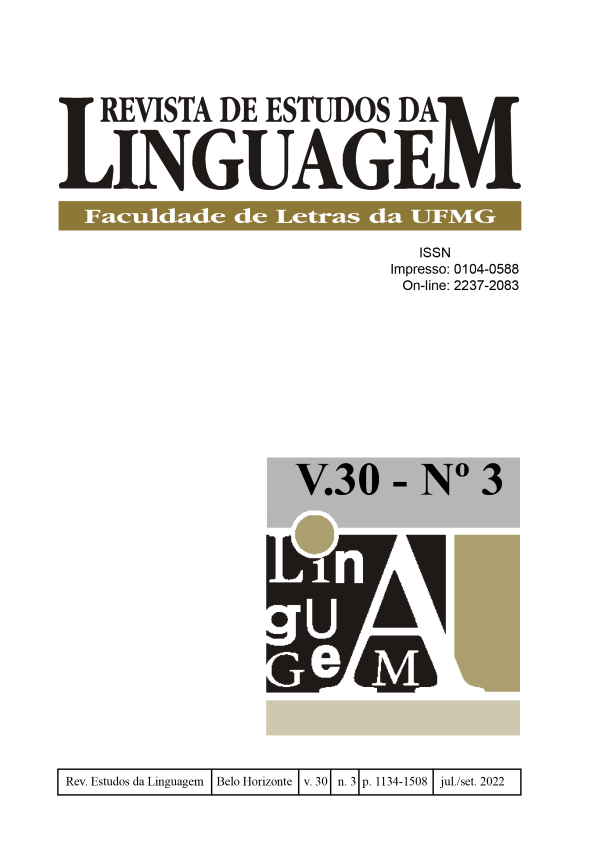Morphological Awareness
the Use of Agentive Suffixes by Illiterate Children and Children in the Literacy Process
DOI:
https://doi.org/10.17851/2237-2083.30.3.1365-1396Keywords:
acquisition of morphology, morphological awareness, agentive suffixesAbstract
This study aimed at investigating morphological awareness of children who were either illiterate or going through their literacy process by applying a production task with agentive suffixes -or, -eiro, -ista. Morphological awareness is the ability to reflect on the smallest units of meaning in a language, the morphemes, intentionally applied to the structuring and recognition of words. The corpus was obtained through interviews with 16 children, 8 male and 8 female, divided into two groups: Group 1: preliterate children, aged between 4 and 5 years; Group 2: children in the process of literacy, aged between 6 and 7 years. The analysis focused on the manipulation of morphemes evidenced by replacing a morpheme with another with the same agentive value. Results showed gradual building of morphological awareness as children’s ages and contact with the literacy process increase, although it had already been present in the first age group that was part of the study. This fact is interpreted as the precocious presence of a level of morphological awareness at the age of 4, when children start to manipulate agentive suffixes and form words that do not follow the conventional structure of the language.




 Esta obra está licenciada com uma Licença
Esta obra está licenciada com uma Licença 